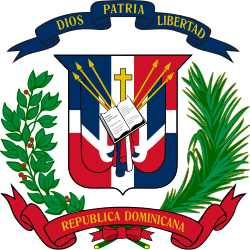Prostitution in the Dominican Republic
Prostitution in the Dominican Republic is legal, but a third party may not derive financial gain from prostitution (brothels or similar establishments are illegal).[1] However, the government usually does not enforce prostitution laws.[2][3]
The Dominican Republic has gained a reputation of being a major destination for international sex tourism, although it's mostly concentrated in poor coastal towns of the country (namely Las Terrenas, Cabarete, Sosua, and Boca Chica), where women have less economic opportunities than in larger towns and cities.[1] Haitian immigrants also take part in the sex tourism business, with many of the prostitutes in some areas being of Haitian descent.[4][5] At sex tourism sites the lighter Dominicans are favored over darker Haitians,[6] who are forced to work in the streets or local bars rather than the more lucrative up-scale areas.[7]
Child prostitution is a problem, particularly in some urban areas and popular tourist destinations,[8][9] but there has been a decrease in child prostitution since 2001, with the increase in policing and the decrease in corruption.[10][11] The United States Immigration and Customs Enforcement has started prosecuting individuals who are engaging in child prostitution.[12]
The prevalence of HIV/AIDS in the Dominican Republic is estimated to be 0.7 percent, which is relatively low by Caribbean standards. However, the percentage among sex workers is estimated to be much higher, ranging from 2.5% to 12.4%, depending on the locale.[13]
See also
References
- 1 2 "2008 Human Rights Report: Dominican Republic". Bureau of Democracy, Human Rights, and Labor. U.S. Department of State.
- ↑ "2009 Human Rights Report: Dominican Republic". State.gov. 2010-03-11. Retrieved 2013-10-12.
- ↑ Julia Scheeres. "The Web, Where 'Pimps' Roam Free". Wired.com. Retrieved 2013-10-12.
- ↑ "Sex tourism thrives on Dominican streets with Haitian girls".
- ↑ "Dominican Republic Deports 163 Haitians".
- ↑ Sex Trafficking: A Global Perspective.
- ↑ Sex Trafficking: A Global Perspective.
- ↑ "Sex, tourism and HIV. A hazardous association in the Dominican Republic". NLM Gateway.
- ↑ "Sex Tourism in Latin America". Harvard University.
- ↑ "Situation of minors in the dominican republic". Inter-American Commission on Human Rights.
- ↑ "Child Sex Tourism in the Dominican Republic" (PDF). ECPAT.
- ↑ "USVI predator pleads guilty to sex tourism charges following ICE investigation". U.S. Immigration and Customs Enforcement.
- ↑ "The Sun. The Sand. The Sex". Science.
